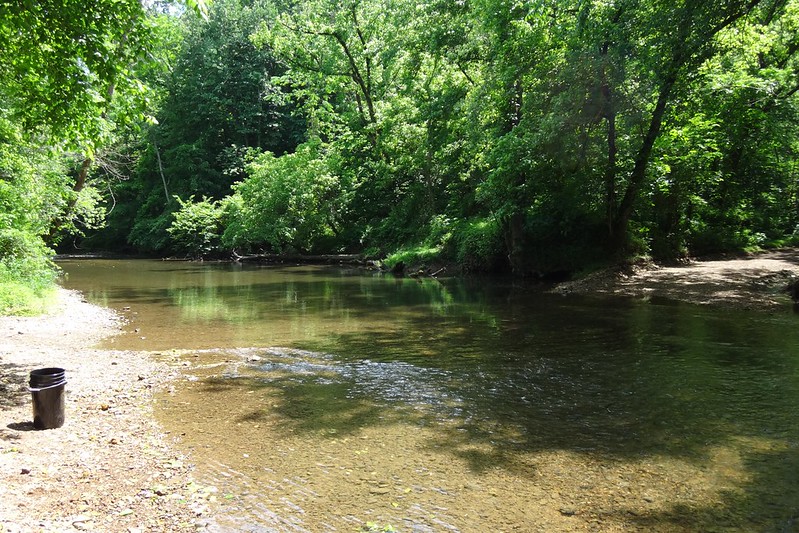
The road crossing formed a nice riffle, but the madtoms were nowhere to be found. However, we were excited to find an active chub mound immediately upstream of the crossing. It had dozens of Tennessee shiners and scarlet shiners spawning on it. Redtail chub is the local Nocomis species that built the nest, but we didn't see any near it. Here's a view from above.
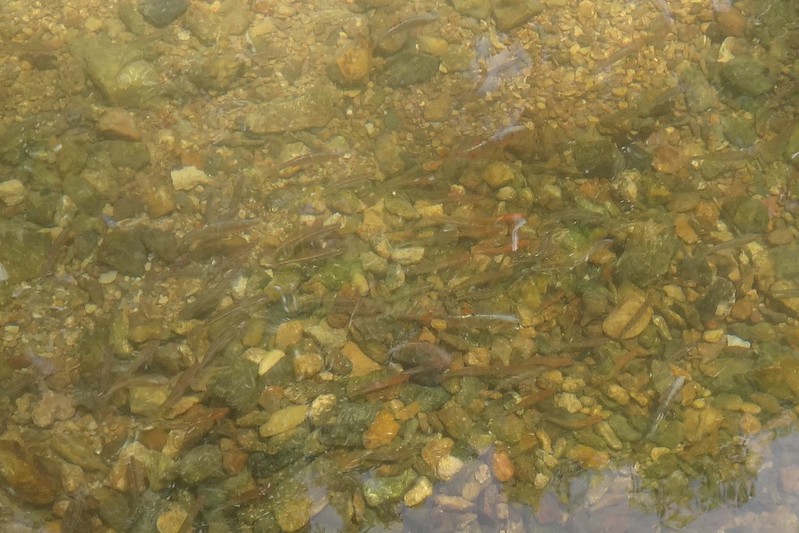
I rigged up a Tanago hook with a piece of locally sourced earthworm. It didn't take long to catch a brilliantly colored male scarlet shiner. Needless to say, my unimpressive lifelist photo for this species is getting replaced by this one!
Scarlet Shiner (Lythrurus fasciolaris)
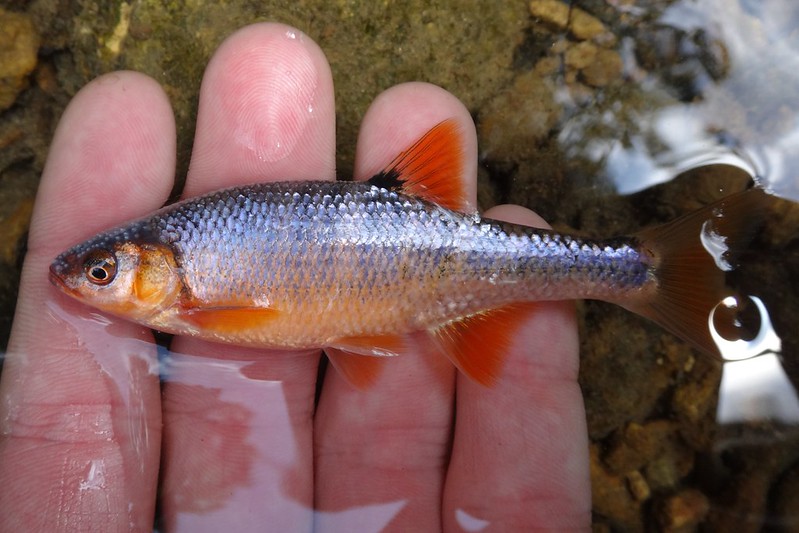
Lance set up his photo equipment and got to work taking photos of the scarlet shiner. Next up was a male Tennessee shiner. I've caught them on several trips in the past but never with spawning colors.
Tennessee Shiner (Notropis leuciodus)
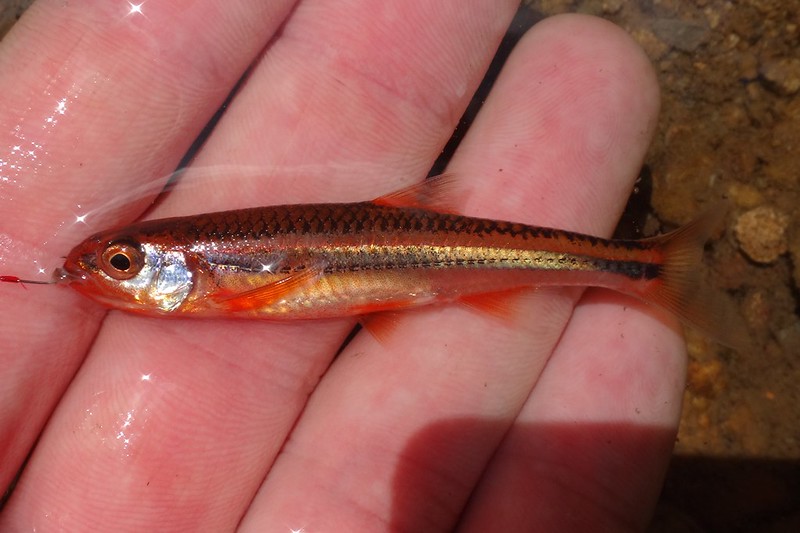
Lance can't resist an active chub mound, so he put on his mask and snorkel and jumped in the water with his camera. I'm honestly not sure why his ass was in the air. Maybe it needs to breathe too?
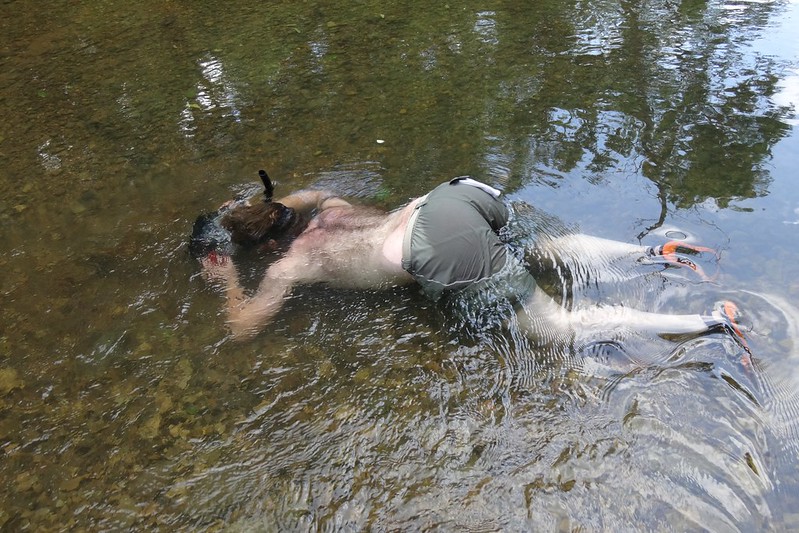
Before we packed up, I poked around in the riffle some more and found several orangefin darters. The one in the photo below isn't bad, but I caught a spectacular "super male" that came off the hook before I could snap a photo. Bummer!
Orangefin Darter (Etheostoma bellum)
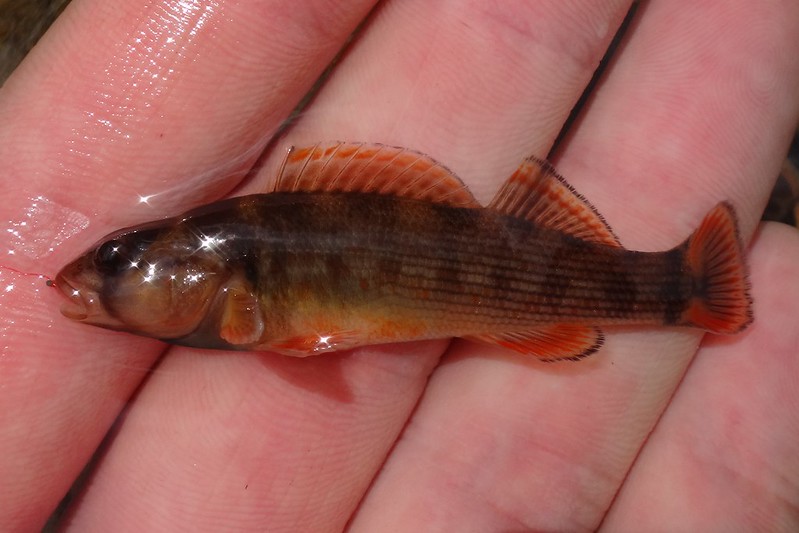
Once Lance was finished, I took a turn using my waterproof camera. My photos turned out ok, but I'm really looking forward to seeing Lance's.
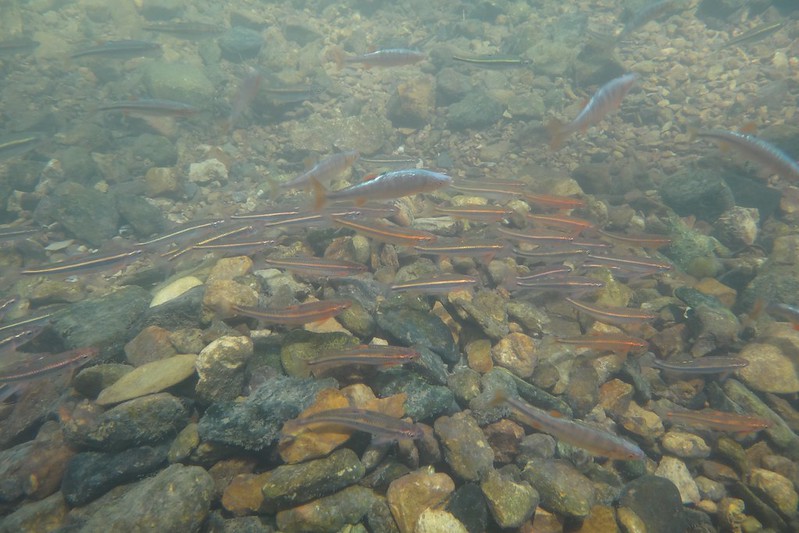
We packed up the car and drove across the creek. It made me a bit nervous with the loose gravel, but we came through the other side no problem. We didn't make it down the road very far though, because these two guys were doing their business in the road. And I do mean guys, because they were both males!!
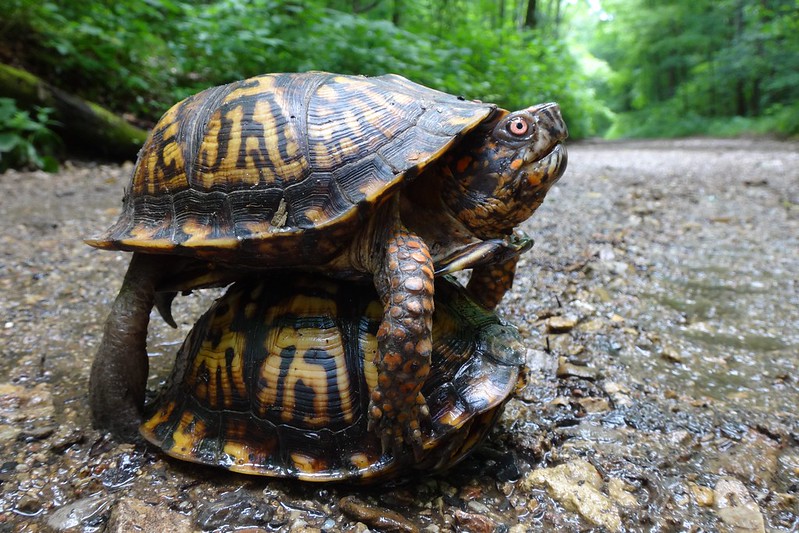
Our next stop was about 5 miles upstream where the creek bottom transitioned from gravel to bedrock slabs. This is a spot where I've tried, and failed, to catch blackfin suckers in the past. Once again I saw several of them and even had one nibble my bait, but when I tried to set the hook, it didn't connect. My only consolation catch from this spot was a tank of a rainbow darter.
Rainbow Darter (Etheostoma caeruleum)
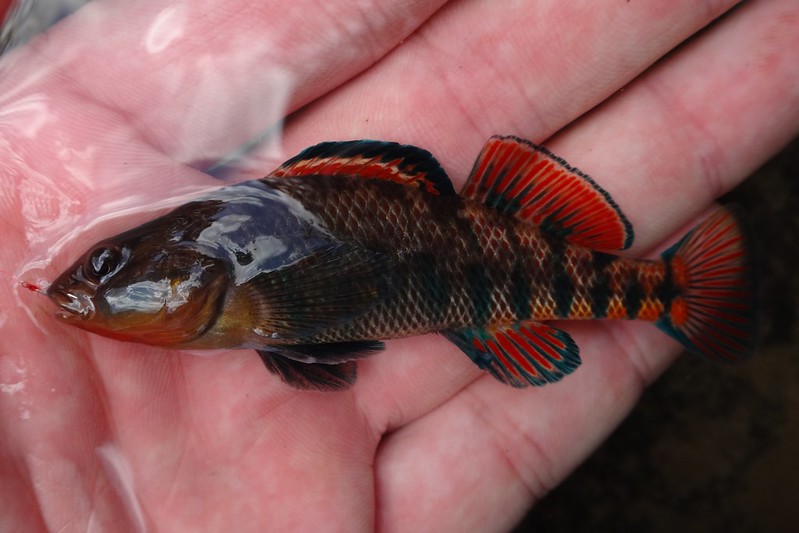
Next we headed south to a stream that was stocked with redeye bass back in the 1940's. The population must be doing well, because Lance and I had no problem catching a few. They were a distinct teal color that really stood out compared to the usual smallmouth and spotted bass. The internet says that typical adult size is 0.5 lbs.
Redeye Bass (Micropterus coosae) - new hook & line species #439
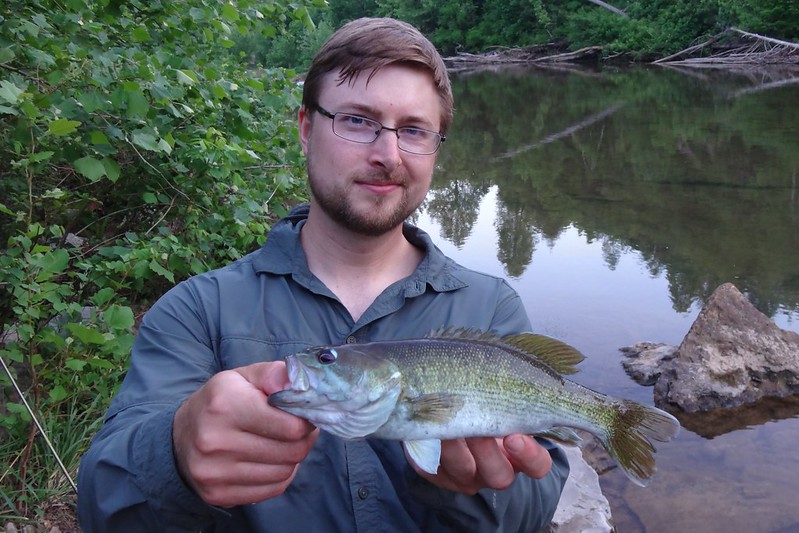
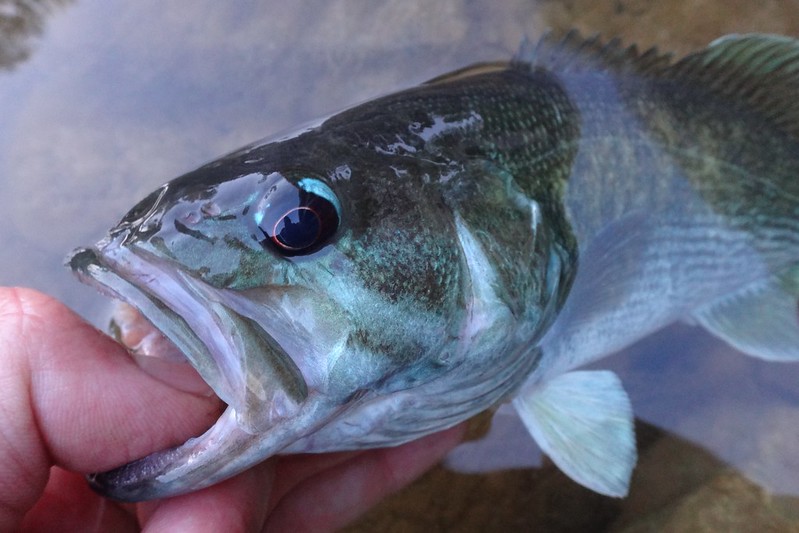
A little ways downstream was a waterfall, and we hoped to catch a lunker bass out of the plunge pool, but we only found rock bass. Good old goggle eyes - when no one else is biting, you always come through!
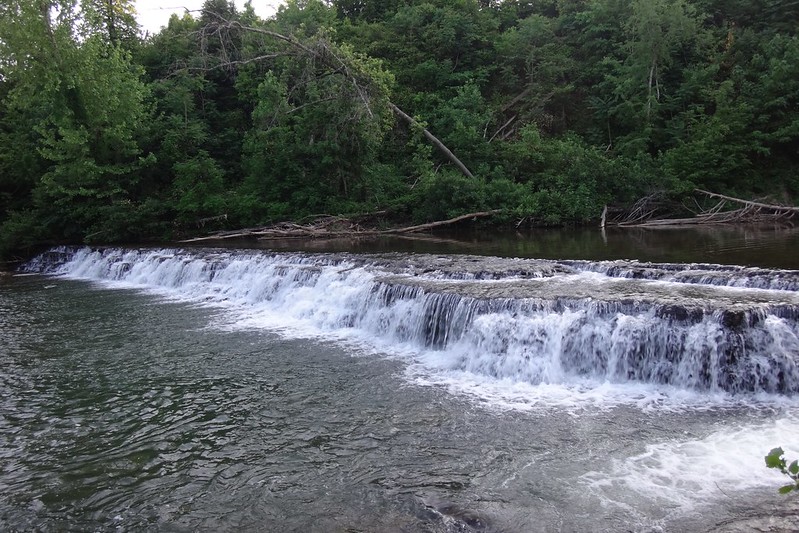
Rock Bass (Ambloplites rupestris)
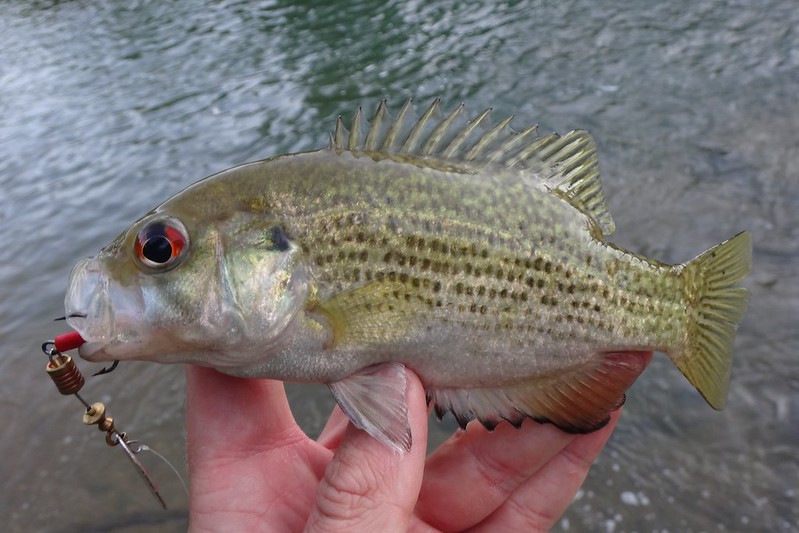
We stayed the night in a motel in the next town and continued our journey south the next morning.
No comments:
Post a Comment
Note: Only a member of this blog may post a comment.